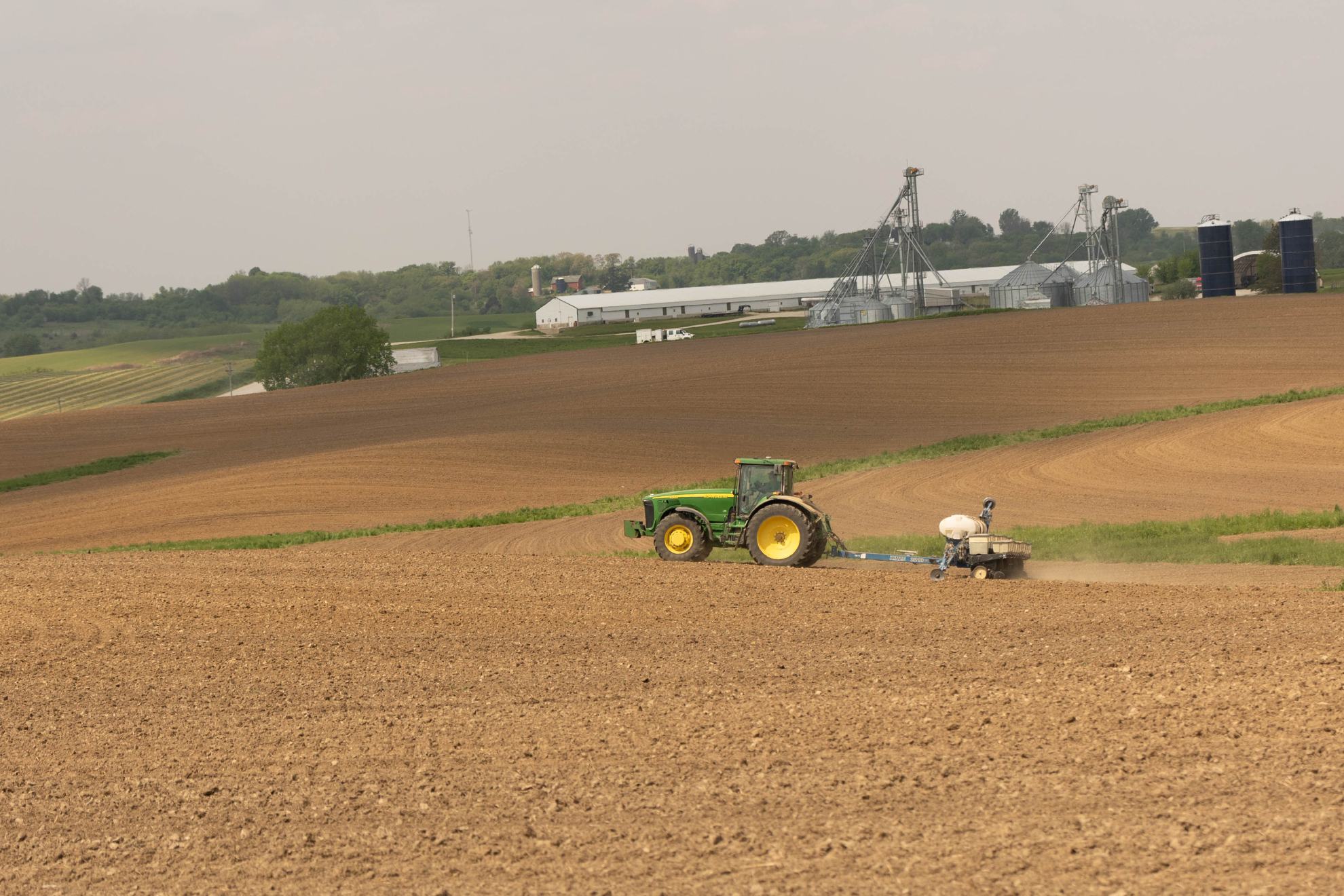
(Photo: Iowa Soybean Association/Joclyn Bushman)
Analyzing your farm's profitability
April 17, 2025 | Kriss Nelson
Brian Knudtson understands the hardships farmers are facing. The Winnebago County farmer is also an ag lender for Manufacturers Bank and Trust in Lake Mills.
Faced with narrowing margins, should farmers cut back on inputs to reduce expenses in their farming operations? Knudtson says he is cautious in doing so.
“Although it is a hard time right now, you can cut too many things in your production plan and you are going to hurt yourself,” he says. “Sometimes pinching pennies can cost you dollars.”
Iowa Soybean Association’s (ISA) Senior Research Agronomist, Alex Schaffer, offers these tips to help farmers boost their farms’ profitability during challenging times.
Seeding rates
Seeding rate trials prove time and time again that farmers are planting too many seeds per acre.
“Our trials do not support the need to increase seeding rates because we do not see a yield response significant enough, especially in the environment of $10 soybeans to offset the seed cost,” he says.
Schaffer recommends farmers make a personal assessment.
“If you are planting 140,000 seeds per acre, I would consider putting a small area into 120,000 seeds per acre and see if you notice a difference,” he says. “If you do, that is your call to action to contact your ISA research agronomist and do a seeding rate trial next year.”
Fungicides and biologicals
Schaffer advises considering delaying investment in non-essential inputs this year.
“As far as fungicides, pay attention to weather conditions favorable for disease and scout for evidence of disease to help decide if your crops need a fungicide application,” he says.
Regarding biologicals, Schaffer admits he isn’t comfortable putting cash into products that have not shown many favorable results.
“Our research hasn’t shown the benefits of biologicals, and although they may work under specific circumstances, we have struggled to see the return on investment, especially in Iowa, where we have healthy soils high in organic matter.”
Knudtson urges his farmer-clients to adopt a defensive strategy in their farming plans.
“When I say to play defense, I mean to make careful capital purchase decisions,” he says. “We must maintain sufficient working capital to navigate these challenging periods. Having cash on hand will help you weather the uncertainty in today’s ag world, with all the ever-changing events that farmers have no control over.”
If funds are available, farmers could explore ways to upgrade equipment and boost farm efficiency.
“I see a lot of value in investing in equipment that can help you operate more efficiently and bring a greater margin than investing in products that may or may not be beneficial,” says Schaffer.
One example is to think about the planter. If there’s a way to place seed more accurately, there is less risk of lowering your seeding rate, or tools that can help assess if you are giving the seed a better chance at developing a better stand because of investments in better equipment.
Another option is to invest in equipment to apply nitrogen efficiently.
“You can put the bare minimum down early, then with the right equipment, you have the capability to come in and Y-drop or side-dress additional nitrogen. You are automatically more efficient with that input, which is also agronomically and environmentally smart,” says Schaffer.
For information on how to reach your ISA research agronomist, click here.
Back